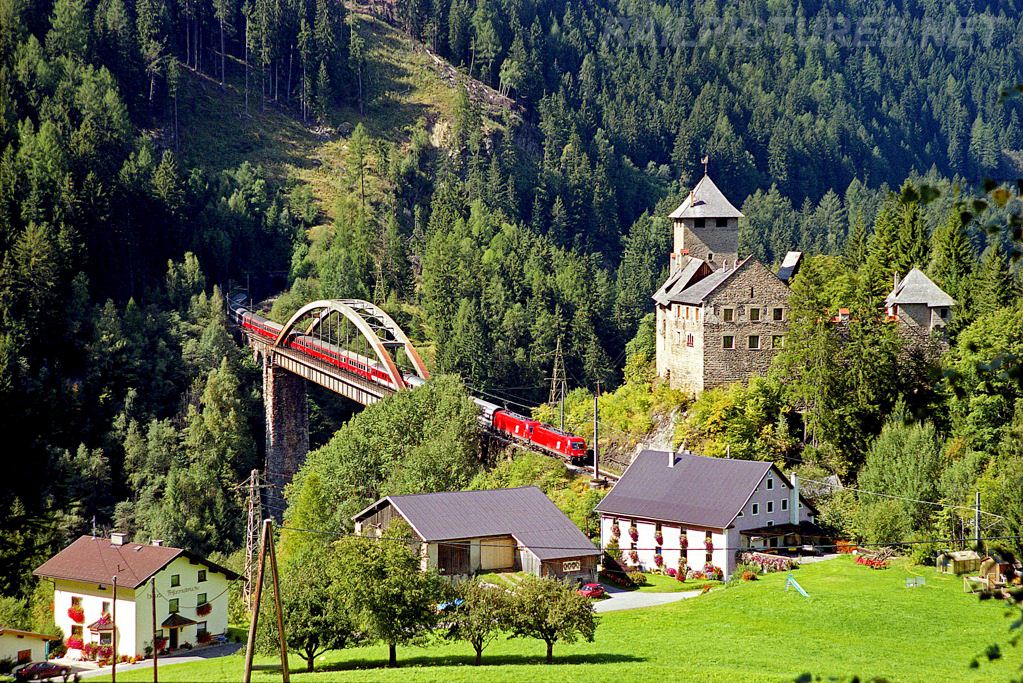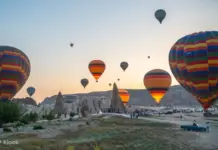If you love Medieval beauty, love to see and visit ancient castles located on cliffs or river banks, don’t miss Austria. Somewhere glimpses of princesses and princes in fairy tales or the majesty of powerful kings once owning massive castles. Located in the heart of ancient Europe, Austria is an attractive destination because of its spectacular natural scenery along with magnificent, splendid architecture and glorious history. But what makes Austria so special is music that is always present in its flow of life, everytime, everywhere. So, what to do and how to plan a perfect budget trip to Austria for the first-time? Let’s check out our Austria travel blog (Austria blog) with the fullest Austria travel guide (Austria guide, Austria tourist guide) from how to get there, best time to come, where to stay, best places to visit and top things to do to find out the answer!
- Salzburg Hallstatt itinerary — The Hallstatt trip from Salzburg for 3 days in Austria
- Where to visit in Vienna? 15 Famous tourist attractions & best places to visit in Vienna
- Taiwan itinerary 3 days — How to spend & what to do in Taiwan for 3 days perfectly?
- New Zealand travel blog — The fullest New Zealand travel guide for first-timers
- Japan itinerary 9 days — How to spend 9 days in Japan to visit: Osaka – Kobe – Kyoto – Nara?



Austria travel blog: Overview of Austria

Geography
Austria or the official name is the Republic of Austria is a landlocked country in Central Europe with an area of more than 80,000 km² and a population of over 9 millions. Although a country that is not too large, Austria shares borders with many other countries such as the Czechia Republic and Germany to the north, Hungary and Slovakia to the east, Slovenia and Italy to the south and Switzerland and Liechtenstein to the west.


About 60% of the area of Austria is the mountains, forests, grasslands of the famous Alps. In the north and south, the terrain is gentle with poetic rivers and lakes. It is this that has created the fairy scenes for this country, including the charming village of Hallstatt.

Language and religion
German is recognized as the national language of Austria (95% of the population), in addition to many other languages such as Turkish, Bosnian, Serbian, English, Hungarian, Croatian, Polish, Albanian, etc. If you travel to Austria, don’t worry too much, because most people can speak English.

The religion with the largest number of believers is Catholicism, followed by Protestantism, and a small part of the population follows Judaism, Buddhism, Christianity, and Islam.
Some “cool” facts about Austria

- Austria is in the top 10 countries with the highest GDP per capita in Europe.
The world’s first postcards were born in Austria. - The German name of Austria is Österreich, which means “Eastern Kingdom” (Öster – “East”, reich – “Kingdom”). While its English name of is Austria is also easily confused with Australia.
- The Austrian flag is the second oldest national flag in the world, designed in 1230 by Duke Leopold V. According to legend, after a battle of the Third Crusade, Leopold’s white cloak was dyed red by blood. But its white back part of was not stained with blood. That’s why he came up with the idea of designing the flag based on these two red and white colors.
- The capital of Austria is the city of Vienna. About a quarter of Austria’s population lives here. This place is also known as the “City of Dreams” because it is the hometown of the world’s first psychoanalyst – Sigmund Freud.


Austria blog: When should you travel to Austria?
Austria has a temperate continental climate. The western part near the Alps will have longer winters and shorter summers than other regions. Because of such climate, the scenery in this area, especially in winter, is like in fairy tales. Summers are usually warm with cool evenings, and there’s nothing better than hiking and mountain biking. Winter is still quite sunny, with just enough snow for winter sports. For those who are passionate about these sports and other winter activities, the period from November to March is the most ideal. However, if you want a trip with warm rays of sunshine but not too bright with not too much rain, then from June to September is the right time for you.
Although Austria is quite small, choosing an appropriate travel time is quite complicated. Because when the scenery in Hallstatt is most beautiful, but it is not the good time to visit Vienna. If you only plan to go to Vienna, it is best to go in the summer (June – August). Because of this time in Vienna there will be many outdoor activities take place, including music festivals.

If you plan to visit Hallstatt, choose autumn or winter. Because the summer scene in Hallstatt is not too special and very crowded with tourists (especially Chinese tourists). It’s a bit of a pity that I went to Hallstatt in the summer, the weather was beautiful, but the scenery was not as magical as my friend went in winter.

Personally, I would probably choose the time of May – June to come here. This is not the peak time of Austria tourism, so traveling here is quite comfortable and not too crowded. In addition, the weather is also more pleasant than summer or winter. In addition, you will find it harder to enjoy the natural beauty of the lakes, mountains, and beautiful roads in winter than in spring and summer.

Austria travel blog: How to get to Austria?
Austria in particular and other European countries in general all have very convenient transport links. From neighboring countries, Austria can be reached by train and by car and by plane. You can take a train from Budapest to Vienna or take a train from Salzburg to Croatia.

For those who want to fly Austria, you can find cheap airfares and most suitable flight routes on Google Flights, SkyScanner or Momondo. Usually, tourists will fly to Vienna first on their journey before heading to Salzburg and finally Hallstatt village.
Austria blog: How to get around Austria?
Train
With a prime geographical location bordering many countries, the transport network in Austria, especially railway, is very developed. I chose the train to travel from Budapest to Vienna, and then also took the train from Salzburg to Croatia.
The public transport system in Austria is very developed, modern, safe and very punctual. ÖBB (The Austrian Federal Railways) is the largest railway company in Austria with both domestic and international routes running from 5am to 11pm. You can book tickets online through the website, or via hotline 05 1717, at ticket counters or ticket vending machines at train stations. Fares for each route from about 8 Euro or more depending on each route.

In addition, with the itinerary of 3 destinations: Vienna – Hallstatt – Salzburg, the train is also the most optimal means. If you depart from Vienna to Salzburg, on the way to take advantage of visiting Hallstatt but do not want to carry bulky luggage, you can send your luggage at the transit station of Attnang-Puchheim (Because going to Hallstatt from Vienna or Salzburg you will have to transit at this station).

At Attnang-Puchheim station, there is a system of lockers of many sizes and modern for you to send your belongings. The transit time is enough for you to send luggage + go to the toilet, so don’t worry too much about missing the train. And if you unfortunately miss the train, there is also a very good lounge at the station (due to the train delay, I had the opportunity to experience this lounge).
NOTE: With the above route, I use most of OBB’s trains. You can download the OBB app (iOS, Android) to buy train tickets and manage schedules very conveniently.

Bus
Buses are also another popular option for tourists when getting around Austria. Buses are available in most cities and only operate from 5 am to 11 pm. To look up information on bus routes, you can visit www.postbus.at or www.oebb.at or refer to flyers at bus stations.
Bike
Bicycle is a very popular and favored means of transport in Austria, most roads have dedicated bicycle lanes. Some cycling routes even lead to famous valleys such as Danube, Enns and Mur. You can rent a bike for 15 – 25 Euros/day.
How to getting around Austria’s cities?
Vienna
The metro is only available in Vienna and you should note that its operating hours only run overnight on Fridays and Saturdays.
Among the three destinations Vienna, Hallstatt, Salzburg, Vienna’s public transport system is the most developed. And metro is the most popular means of transport used by tourists here.

You can buy a day pass (daily tickets) for 24, 48, 72 hours, saving and convenient with unlimited travel times (This card can be purchased at the ticket vending machine at the stations or buy online here). If you plan to stay in Vienna just for 1 day, you should buy 24 hours card for EUR8. You can find more information about metro fares in Vienna on the following page.

Salzburg
In Salzburg or Hallstatt, you can completely walk to visit the attractions in the city or village. Note that you should limit the use of taxis because the price is very high. I went from the hotel to the Salzburg train station, only a short distance and have to spent nearly €20.

Austria blog: Where to go?
During my self-sufficient trip to Austria, I went to some famous places such as the capital of Vienna, the ancient village of Hallstatt, the city of Salzburg – Mozart’s hometown and some other surrounding areas. Actually, on this trip, I went to 2 more small places belonging to Slovakia and Germany. I’m pretty pleased with that decision. Although these attractions are located in different countries, they are close to each other, so traveling between them is quite easy.
For example, on the first day when I arrived at Vienna’s capital airport, from here I took a bus for 1 hour to travel to Bratislava – Slovakia’s capital. These are the two closest capitals in the world and are only 60km (1 hour) apart, so traveling is very convenient.
I stayed there to visit and then took the bus back to Vienna at noon the next day to continue visiting Vienna. Likewise, after visited Salzburg, I spent a day to crossing Lake Königssee in Germany. This lake is only away 30km from Salzburg and the scenery is extremely beautiful. I highly recommend you take a trip to visit this lake.

Vienna
The capital and also largest city of Austria, Vienna is the economic, cultural and political center. Inheriting the ancient and unique architecture from the family of Habsburg who ruled Austria for nearly 650 years, Vienna owns UNESCO palaces, and is known as a city of music and art.

Vienna is also the cradle of classical music in Europe, with many famous composers such as Mozart, Haydn or Beethoven. The city features castles, palaces of the Habsburg dynasty and the romantic Danube river flowing through the city. I was quite surprised when I came to Vienna because I did not think it was so beautiful, magnificent. Almost travelers come to Austria just to visit the ancient village of Hallstatt, but for me personally, you should spend time visit Vienna.

VIENNA TRAVEL TIPS
- Time to visit: June – August
- Accommodation area: Innere Stadt District
- Means of transportation: Metro
- Tourist attractions: Schönbrunn Palace, St. Stephen’s Cathedral, Kunsthistorisches Museum Wien, Hundertwasser House (Hundertwasserhaus), Imperial Palace (Hofburg), Austrian Gallery Belvedere, Stephansplatz Square, Austrian National Library, Vienna State Opera (Wiener Staatsoper).
Vienna really has a lot of impressive museums, theaters, palaces and bustling old town. This is probably the top 5 European capitals that I feel most excited about so far. You absolutely should not miss this most livable city in the world when traveling to Austria. Vienna has been voted the world’s most liveable city twice in 2018 and 2019. Exploring Vienna I think about 2–3 days is fine. You should buy a Vienna pass for €85 to get free admissions to all major tourist attractions as well as free ride public transport.
Salzburg

Located in the center of Austria is Salzburg, the birthplace of Mozart, where he spent more than half of his short life. As Austria’s fourth largest city, famous for its mysterious architecture, Salzburg is one of the best-preserved cities and is on the UNESCO heritage list. Legend has it that when you come here, your soul is lost in the world of rhythms, and it is hard not to play a certain tune as you stroll along the Salzach River or when climbing each step of the Hohensalzburg fortress.
SALZBURG TRAVEL TIPS
- Time to visit: November – February
- Accommodation area: City center area (along the 2 banks of the Salzach River)
- Means of transportation: Walking
- Tourist attractions: Fortress Hohensalzburg, Mirabell Palace & Gardens, Hellbrunn Palace, Mozart’s Birthplace, Linzergasse District, Old Market Square, Hellbrun Castle Garden, Hohe Tauern National Park, Salzburg Carolino Augusteum Museum, Wolfgangsee Lake.
Usually travelers see Salzburg as a stopover before going to the ancient village of Hallstatt. Traveling to Hallstatt from Vienna takes a long time to travel (4 – 5 hours/one-way), but the cost of accommodation in this village is quite expensive, so they often stay overnight in Salzburg. Personally, if you travel to Salzburg, just 1 day is enough. However, if you combine going to some nearby natural sights such as Lake Konigsee in Germany or Grossglockner High Alpine Road (one of the most beautiful roads in the world), you will need more time.
Hallstatt
The ideal destination to end your trip will be a picturesque village of Hallstatt, with a picture of a poetic and lyrical small lake town appearing before your eyes. With a long history dates back thousands of years, tranquil lake and towering peaks, Hallstatt is considered by some to be one of the most beautiful places on earth.
The ancient village of Hallstatt is famous around the world for its poetic and peaceful beauty. With its back rylying on the mountain and facing the lake, this lovely little village is like a pearl of Austria. Not only that, the ancient village of Hallstatt also has the oldest salt mine in the world, along with ancient churches and castles with unique medieval architecture. Therefore, this place has been recognized by UNESCO as a World Heritage Site and voted in the top 10 most beautiful villages in the world.
HALLSTATT TRAVEL TIPS
- Time to come: November – February
- Accommodation area: It is not recommended to stay overnight
- Means of transportation: Walking
- Tourist attractions: Marktplatz Square, Salzwelten Salt Mines, Hallstatt Ossuary (Bone House), Dachstein Giant Ice Cave, Skywalk, Waldbachstrub Waterfall, Lake Hallstätter See, Hallstatt Old Town

Normally to get to the ancient village of Hallstatt you can go from Vienna (4 hours) or from Salzburg (1.5 hours). This village is quite small, so visit time recommend for about 3 – 4 hours is fine, even shorter. Taking a day trip from Vienna will be quite difficult and very tiring, so I do not recommend going this way. If possible, resting overnight in Salzburg or rent a room in the ancient village of Hallstatt.
Innsbruck

Innsbruck is Austria’s year-round tourist destination. It is famous for its skiing resorts in the Alps, which was also the site of the 1964 and 1976 Winter Olympics. The colorful houses along the Inn River stand out against the white snow of the range The Alps are definitely a sight that will captivate every visitor here.

Innsbruck also has many other attractions such as Court Church (Hofkirche Innsbruck), Ambras castle, Ambras Bells Museum, and more.
Hochosterwitz Castle
The castle is located on a 160-meter high rocky peak, the castle was built in the Middle Ages and has been owned by the Khevenhüllers family from 860 AD to the present. This place will be open to visitors from April to October every year and to firsthand see the castle in front of you, you have to pass the 620m long trail and 14 fortified gates.
Lake Worthersee
This is the largest lake in Carinthia, an attractive summer destination in Austria. Sports enthusiasts will want to paddle to the other side of the lake, explorers will visit the colorful Griffen Stalactite caves, the 12th-century Gurk cathedral, and car lovers wanted to once again enter the nearby Gmund and Villach automobile museum (Auto Museum TAF-TIMER – Back to the Future).

In addition to the main places to visit above, on my Austria journey, I also visited some other places such as Golling Waterfall, Lake Bluntausee, Eisriesenwelt Ice Cave (the largest rock cave in the world), Hohenwerfen Castle, Liechtensteinklamm gorge, Lake Zell, Grossglockner High Alpine Road, Lake Fuschlsee, Lake Mondsee, Mount Schafberg, Lake Wolfgangsee. It may quite a lot, but that’s why I went to Salzburg – Hallstatt and stayed there for 5 days. If you ask me where should you go, where should not go, it is really difficult for me. Every place is very beautiful and has its own attractive. And if I had to choose again, I would still decide to visit all because basically you will hardly find the same landscapes in other European countries except in Switzerland. You can follow more detailed articles I linked at the end of this guide to see how beautiful these places are.

Austria blog: What to eat in Austria?
With borders with many countries such as Italy, Germany, Hungary, each region in Austria has its own distinct cuisine. The taste of the food in the eastern part is a bit like Hungary, while in the western part has a lot of influence from Germany.
Wiener Schnitzel (Viennese cutlet)

This is considered the “national dish” of Austria. Traditionally, it is made from a thin piece of veal breaded, then deep fried in oil or butter. Some other variations use beef, pork or turkey.
This dish is served with Austrian potato salad or steamed or fried potatoes, topped with a slice of lemon and a sprig of fresh parsley making it extremely eye-catching. A glass of cold wine or a Gruner Veltliner white wine is the perfect accompaniment to Wiener Schnitzel.
Apfelstrudel apple pastry

An Austrian pastry is loved around the world. You can find it in any pastry shop, cafe or restaurant in Vienna. The pastry has a thin, crispy dough crust, inside the filling is a mixture of raisins, lemon, rum, cinnamon, and cloves. Then top with breadcrumbs mixed with nuts and fine sugar or vanilla sauce.
This dessert is especially delicious when enjoyed with Austrian coffee or black tea.
Tafelspitz
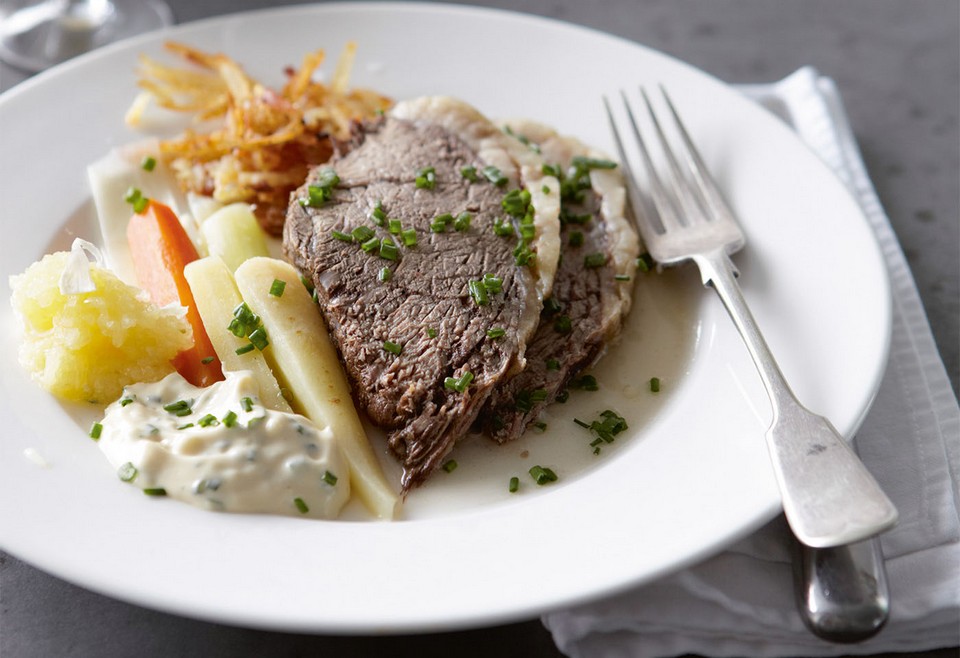
Meat lovers should definitely not miss this dish. Beef or veal is stewed with vegetables such as carrots, potatoes, horseradish… Its rich and hot taste is suitable with a little cold of autumn or winter.
Sachertorte chocolate cake

Sachertorte cake is the own brand of the Sacher family, in Austria people love this cake so much that they choose November 5 every year to celebrating and call it Sachertorte cake day.
Sachertorte chocolate cake consists of 2 layers of torte made from melted chocolate with butter, eggs, and some other additives. The special thing about this cake is the special layer of apricot jam in 2 layers made according to the secret heirloom recipe of the Sacher family.
Topfengolatschen

A small square cheesecake made from danish or pastry, people use caster sugar, raisins, egg yolks and corn starch to make this pastry. You can buy Topfenkolatschen at most Austrian bakeries or patisseries, enjoy it with a cup of hot tea.
Roasted chicken

If you step into a pub in Austria, you will find this roasted chicken, which is served to drinkers, is a great snack. In Austria, there are two popular types of roasted chicken, Backhendi and Paprikahendi. Backhendi is marinated in flour, eggs, breadcrumbs and then roasted, while Paprikahendi is often served with German Spatzle pasta and lettuce.
Frittaten, Grießnockerl, Kaspressknödel soups
It is the broth from the Tafelspitz that will be used to make these appetizer soups. Toppings are added to the broth such as long-rolled pancakes like noodles (Frittaten soup), dumpling (Grießnockerl soup), fried dumplings (buns) made with bread and cheese (Kaspressknödel soup).

Tiroler Gröstl
Tiroler Gröstl is a very popular dish in the Alpine region. The ingredients are very simple, including: french fries, thinly sliced beef (pork), onion, butter, topped with an omelet. This is a classical Austrian dish, popularly served in ski resorts.
Austria travel blog: Where to stay?
Some hotels I feel quite good, you can check it out:
Vienna: Motel One Wien-Hauptbahnhof in the city center for €70/night. The hotel is clean, new, modern and very close to supermarkets. (Check rates on Agoda.com or Booking.com).
Salzburg: Check best hotels in Salzburg on Agoda.com, Booking.com.
During my trip to Hallstatt, I only stayed in Salzburg and rented a car to Hallstatt to play for the day. However, if you want to experience life in this lovely small village, I think you should rent a room here. You can refer to some of the following options:
Hallstatt Lakeside: An apartment has a private garden and a view overlooking Hallstatt lake. The house is conveniently located, near the bus station, supermarket and square (5 minutes walk). Double room price at €97 depending on season.
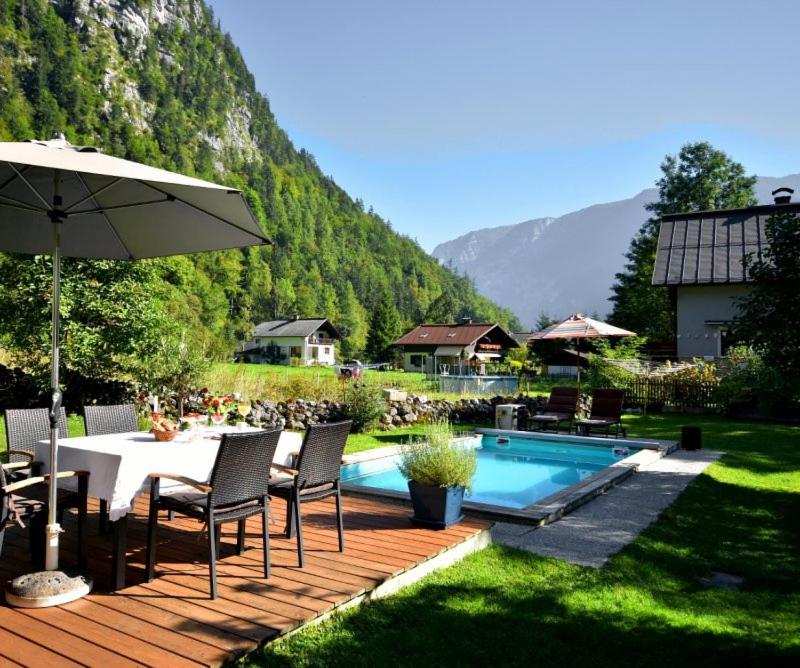
B&B Haus Hemetzberger: An apartment with mountain view, outdoor swimming pool and a cute little garden. The location of the house is also very convenient, near the bus stop, the museum and the square. Double room price at €110 including breakfast. (Check rates on Agoda.com or Booking.com).

In addition, you can find top rated and best hotels on Agoda.com, Booking.com.
Austria blog: What to buy?
- Porcelain is a very special gift in Austria with a variety of designs.
- Specialties such as wine, Sacher cake, Mozart Balls candy, Mozart chocolates, Demel’s confectionery, Chocolate, Lebkuchen cake
- Souvenirs bearing Austrian symbols such as keychains, clothes, display items.
- Traditional Austrian costumes.
Austria travel blog: Traveling costs
The cost of traveling to Austria depends on the needs and preferences of each individual. In my opinion, the traveling cost here is also on par with other famous European tourist destinations such as Paris, Venice and a bit cheaper than Denmark, Norway and a lot cheaper than Switzerland. The mid-range self-sufficient Austria travel cost you can refer to is as follows:
- Hotel: €30-40/night, shared
- Meals: €35€/day
- Traveling: €20/day
Total about €100/day.
Austria blog: Suggested Austria travel itinerary 3 days 2 nights
According to my travel experience, you should arrange an itinerary of 3 days or more to go to 3 main Austria’s tourist attractions: Vienna, Hallstatt, Salzburg (Hallstatt is a day trip).
However, with 3 days itinerary you can save quite a lot, but it will be rush and quite tiring. To make the itinerary a little easier, you should add 1 day for Vienna or Salzburg.
Here is my 3D2N Austria travel itinerary, you can refer to it:
DAY 1
07:40 – 10:21: Train from Budapest Keleti (Hungary) to Vienna Hbf
11:00: Back to the hostel to send luggage
11:30: Lunch
13:00: Schönbrunn Palace
17:30: St. Stephen Cathedral
18:00: Walking around streets
20:00: Dinner

DAY 2
06:55 – 10:44: Train from Vienna Hbf – Hallstatt
11:00 – 16:00: Visit the village of Hallstatt
16:32 – 18:48: Train from Hallstatt – Salzburg
19:30: Check in hotel
20:00: Dinner
DAY 3
09:00: Mirabell Garden
09:45: Mozart’s Birthplace
10:30: Linzergasse
12:00: Old Market Square
13:00: Lunch
14:12 – 20:53: Train from Salzburg – Zagreb Glavni Kolod (Croatia)

Austria travel blog: Austria travel tips
Austrians are not friendly and service in Austria is extremely poor. During my 3D2N trip, I encountered not one but many unloving things about Austrians:
- When I first arrived in Vienna, I asked locals for directions, but as soon as they hear, they ignore it and say nothing.
- When eating at a restaurant in Hallstatt, my group with 3 people but the staff only give one menu. I asked for another one, the staff replied “Why do I have to give you another menu?”.
In Hallstatt, we rented a canoe to getting around the lake. Everything was Okay until the canoe returned to the wharf, the owner accused us of damaging his canoe, then he asked for €100 or else he will report it to the police. We refused, argued for a while, got bored and said that we only have exactly 50 euros now, will you agree? The person in charge agreed without saying anymore.
Men’s toilets at some placess in Austria have very high pedestals, I don’t think it serves short people.
You should buy tickets to attractions in advance to save time, to avoid queueing.
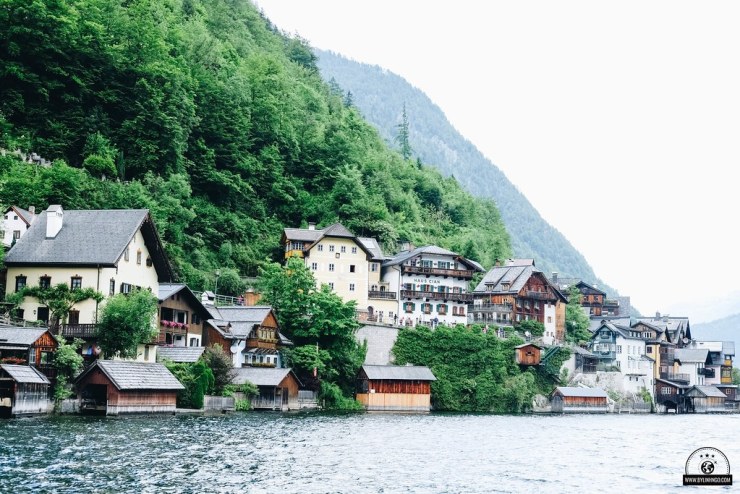
Some best day tours, trips, activities and transfer services, tickets in, from and to Vienna you can refer to
- Private Vienna International Airport (VIE) Transfers for Vienna
- Vienna City Card
- Vienna PASS
- Vienna City Airport Train Tickets
- Salzburg Day Tour from Vienna
- Hallstatt Day Tour from Salzburg
- Hallstatt Day Tour from Vienna
- Vienna Big Bus Hop-On Hop-Off Tours (Open-Top)
- Schönbrunn Palace (Skip-the-Line) and Vienna City Tour
Are you looking for more top things to do in Vienna: Tours, activities, attractions and other things? Read more: 1 day in Vienna — Suggested Vienna 1 day itinerary & best places to see in vienna in 1 day. And guides for Hallstatt, Innsbruck, Salzburg and Austria.































![10 best airports in Asia in 2016 [RANKED] kuala-lumpur-international-airport-best airports in asia in 2016 by skytrax ratings](https://livingnomads.com/wp-content/uploads/2016/08/29/kuala-lumpur-international-airport-best-airports-in-asia-in-2016-by-skytrax-ratings-218x150.jpg)




















